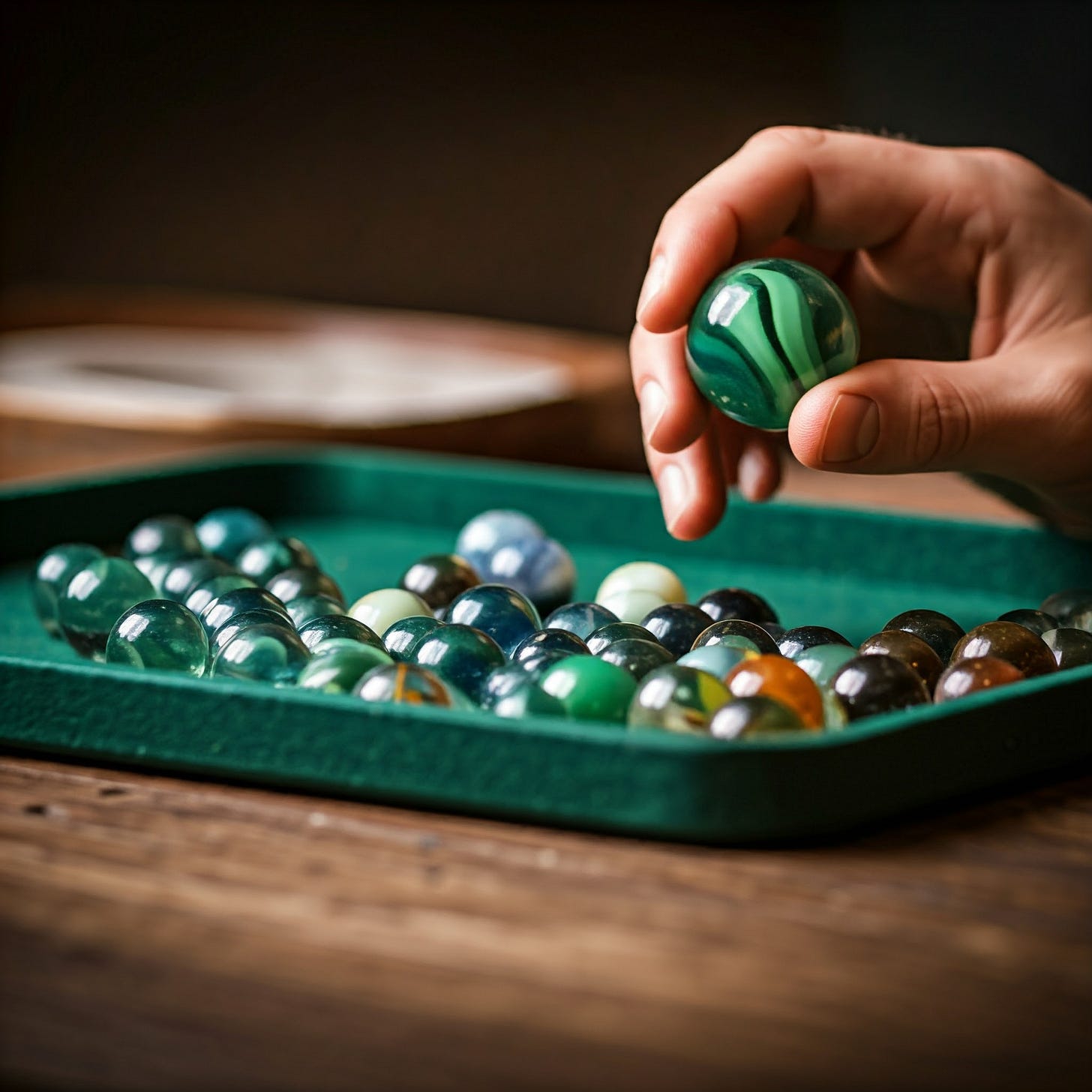For many children in the 1970s, marbles were the gateway to gameplay and collectability. As one such child, I recall them being among the first objects I truly appreciated for their aesthetic qualities. The smooth, cool surface, the swirling colors trapped within the glass, and the way the light seemed to dance through them - all of these elements combined to create miniature works of art. Whether they were traditional cat's eye marbles, vibrant aggies, or trendy fried marbles, each seemed to hold a universe of beauty within its small spherical form. This early appreciation sparked a lifelong interest in art and design for many of us who grew up in that era.
The game of marbles has a history spanning thousands of years, with evidence of marble-like objects found in ancient Egyptian tombs and Native American burial mounds.
In ancient Rome and Greece, children played games similar to modern marbles using nuts or polished stones. These games often involved shooting one marble at others to knock them out of a designated area.
During the medieval and Renaissance periods, marble games became more structured. The game "Ring Taw" emerged, where players attempted to knock marbles out of a circle drawn on the ground.
Marbles experienced a surge in popularity, particularly among children, in the 18th and 19th centuries. Various games were developed, including "Ringer," where players tried to knock marbles out of a large circle; "Cherry Pit," where marbles are shot at a small hole in the ground; and "Bridgeboard," where marbles are rolled through arches on a special board. Competitive marble tournaments became common, with the British and World Marbles Championships being notable examples that continue to this day.
The form of marbles play most familiar to me in the '70s was the Cherry Pit variation. My Catholic elementary school was part of a four-school cluster, which also included a public elementary school, the junior high school, and a derelict high school building. The entire two-block area was a sea of asphalt. Around the old high school, in particular, the decrepit surface was pocked with holes ranging in size from a few inches across to a foot or more.
As I recall, the rules of the game were something like H-O-R-S-E, in that the initial shooter could attempt from anywhere, and if he/she made it, the next player had to replicate the shot. The game continued until all but one player had been eliminated. Or something like that... it was a long time ago. The winner got to keep all the marbles in the pit. It was effectively predatory collecting.
Marbles was a low-skill, low-risk pastime. A bag of marbles was about a buck, and while there was undoubtedly a knack to it that improved with practice, it didn't require any specific athletic ability or hours of dedicated training.
Although their popularity has waned slightly in the digital era, marbles are still widely collected and played today. One '70s trend, however, seems to have died out almost completely: fried marbles.
Despite the name, these marbles weren't actually fried. The process involved heating marbles in a pan until they cracked internally, then quickly transferring them to ice water, causing further cracking. The rapid temperature change created beautiful, web-like patterns inside the marbles.
Fried marbles became a popular craft and were highly sought after in my grade school as collectibles and to create jewelry and decorative items. This short-lived craze highlighted the versatility of marbles and their enduring appeal beyond traditional games, but I have to come clean and admit that my one attempt at fried marbles resulted in the application of lots of burn ointment.
The timeless appeal of marbles exemplifies the enduring power of simple pleasures in an increasingly complex world. You don't need batteries or an internet connection, just a circle in the dirt or a hole in the ground. A bag of 50 is around six bucks on Amazon, although I don't think they are quite as colorful or intricate as the ones I collected as a boy. Or maybe that's just the rosy light of sentimentality.





Thanks for the cool little piece. John